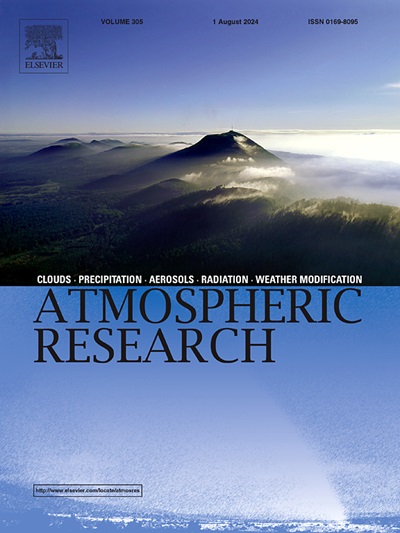How the unparalleled dust storm over the Arabian Peninsula in May 2022 exacerbated the record-breaking heatwave in China in the ensuing summer
IF 4.5
2区 地球科学
Q1 METEOROLOGY & ATMOSPHERIC SCIENCES
引用次数: 0
Abstract
Against the background of global warming, the increasing frequency of extreme high-temperature events (EHTF) in East China poses a huge threat to societal development and public health, and this was starkly demonstrated by the record-breaking EHTF observed in China in summer 2022. In this study, it was found that the record-breaking dust storm in May 2022 over the Arabian Peninsula accounted for approximately 65.2 % of the abnormal amplitude of July–August EHTF in China in the ensuing summer. Mechanistically, the dust aerosols of this heavy dust storm over the Arabian Peninsula were transferred downstream by the trade winds, whereupon they cooled the Indian Ocean via radiative processes and warmed the Tibetan Plateau through the so-called “snow-darkening effect”. These dust effects persisted until late summer and consequently strengthened the Indian summer monsoon and wetted the Indochina Peninsula. Subsequently, the associated enhanced and eastward-shifted South Asian high and westward-shifted western Pacific subtropical high contributed to the record-breaking EHTF in 2022. A physical–empirical forecast model was developed based on the preceding May dust signals over the Arabian Peninsula, and results showed that it skillfully predicts the interannual variability of July–August EHTF in East China during 2009–2022, and especially the record-breaking amplitude in 2022.
2022年5月阿拉伯半岛上史无前例的沙尘暴是如何加剧中国随后夏季破纪录的热浪的
在全球气候变暖的背景下,中国东部地区极端高温事件频发,对社会发展和公众健康构成巨大威胁,2022年夏季中国创纪录的极端高温事件就是明证。研究发现,2022年5月阿拉伯半岛破纪录沙尘暴约占中国7 - 8月夏季高温天气异常幅值的65.2%。从机制上讲,阿拉伯半岛上这场强沙尘暴的沙尘气溶胶被信风转移到下游,然后通过辐射过程冷却印度洋,并通过所谓的“雪暗效应”使青藏高原变暖。这些沙尘影响一直持续到夏末,从而加强了印度夏季风,并使印度支那半岛湿润。随后,南亚高压的增强和东移以及西太平洋副热带高压的西移导致了2022年破纪录的东高压。基于阿拉伯半岛前期5月沙尘信号,建立了物理-经验预报模型,结果表明,该模型能较好地预测2009-2022年中国东部7 - 8月高温天气的年际变化,特别是2022年的峰值。
本文章由计算机程序翻译,如有差异,请以英文原文为准。
求助全文
约1分钟内获得全文
求助全文
来源期刊

Atmospheric Research
地学-气象与大气科学
CiteScore
9.40
自引率
10.90%
发文量
460
审稿时长
47 days
期刊介绍:
The journal publishes scientific papers (research papers, review articles, letters and notes) dealing with the part of the atmosphere where meteorological events occur. Attention is given to all processes extending from the earth surface to the tropopause, but special emphasis continues to be devoted to the physics of clouds, mesoscale meteorology and air pollution, i.e. atmospheric aerosols; microphysical processes; cloud dynamics and thermodynamics; numerical simulation, climatology, climate change and weather modification.
 求助内容:
求助内容: 应助结果提醒方式:
应助结果提醒方式:


